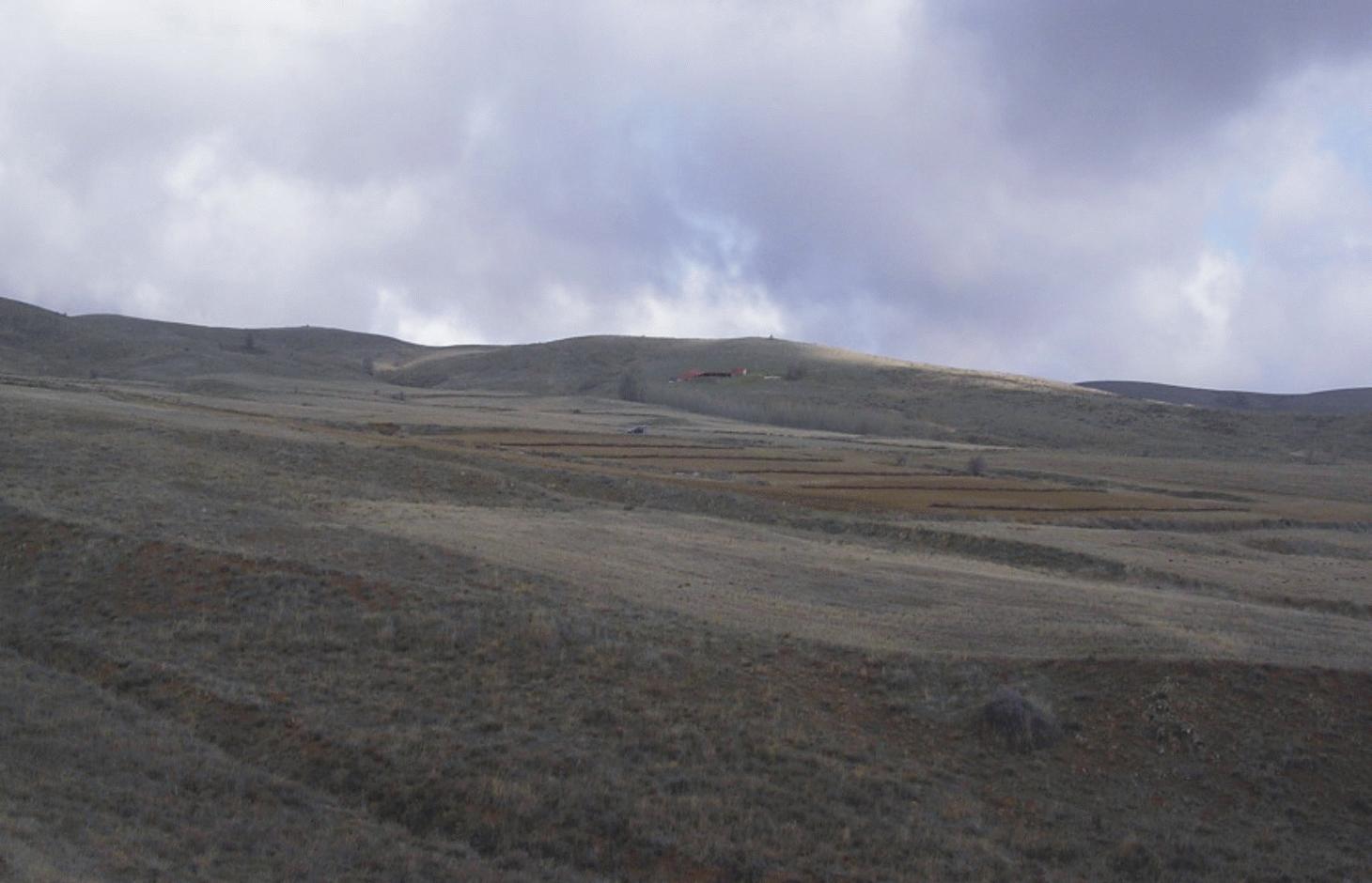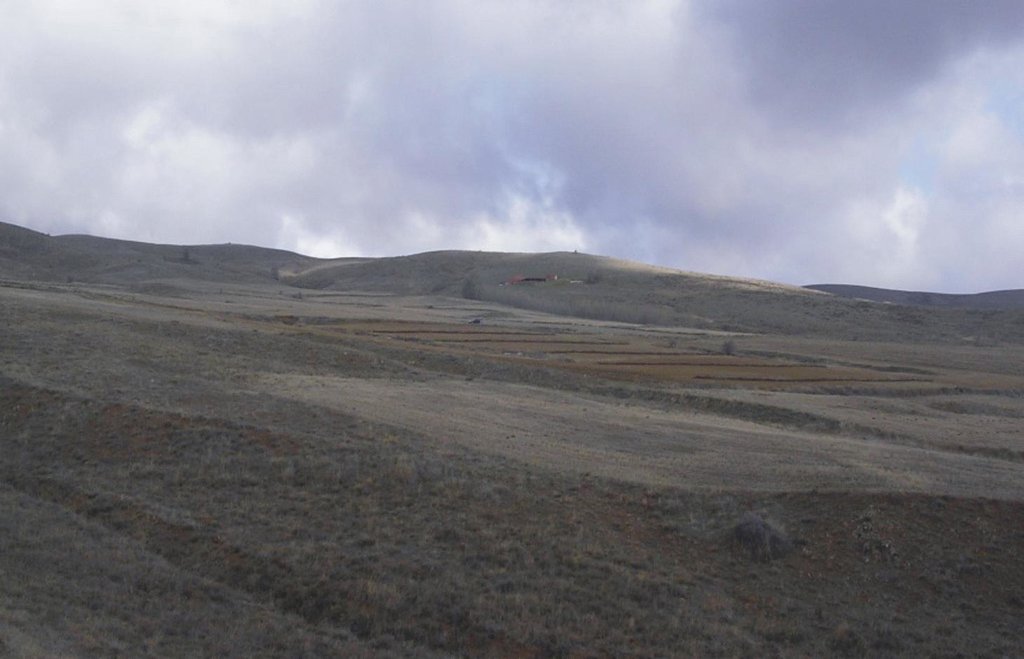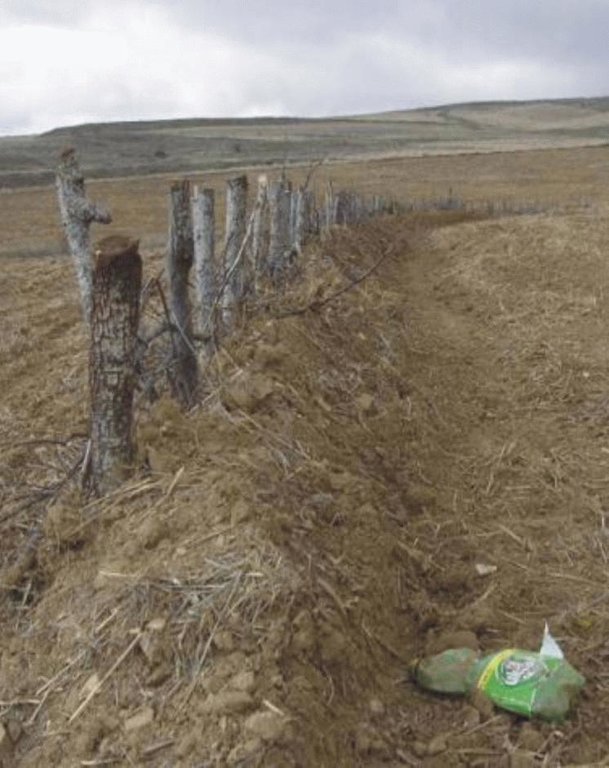Woven Wood Fences [Türkiye]
- Creation:
- Update:
- Compiler: Faruk Ocakoglu
- Editor: –
- Reviewers: Deborah Niggli, Alexandra Gavilano
Odundan Örme Çitler (Turkish)
technologies_1535 - Türkiye
View sections
Expand all Collapse all1. General information
1.2 Contact details of resource persons and institutions involved in the assessment and documentation of the Technology
SLM specialist:
Inci Tolay
Akadeniz University
Türkiye
Name of project which facilitated the documentation/ evaluation of the Technology (if relevant)
DESIRE (EU-DES!RE) {'additional_translations': {}, 'value': 813, 'label': 'Name of the institution(s) which facilitated the documentation/ evaluation of the Technology (if relevant)', 'text': 'Akdeniz Üniversity (Akdeniz Üniversity) - Türkiye', 'template': 'raw'} {'additional_translations': {}, 'value': 813, 'label': 'Name of the institution(s) which facilitated the documentation/ evaluation of the Technology (if relevant)', 'text': 'Akdeniz Üniversity (Akdeniz Üniversity) - Türkiye', 'template': 'raw'}1.3 Conditions regarding the use of data documented through WOCAT
The compiler and key resource person(s) accept the conditions regarding the use of data documented through WOCAT:
Yes
2. Description of the SLM Technology
2.1 Short description of the Technology
Definition of the Technology:
Wooden fences are an effective and relatively cheap way of conserving soil from water erosion by decreasing overland flow. They also increase crop yield by encouraging better infiltration.
2.2 Detailed description of the Technology
Description:
Dry croplands in semi-arid regions are generally subjected to intense soil erosion in hillslopes due to sudden heavy rainfalls. In these areas, conserving soil and water by cheap technologies that could be installed by the farmers with available resources and knowledge becomes important.
Purpose of the Technology: Woven wood fences represent a technology applied and demonstrated successful in semi-arid mountainous dry croplands in Eskişehir, central Anatolia. They consist of wooden posts 150 cm height inserted into the ground and branches woven between these posts. Eroded soil from upslope becomes trapped on the upslope side of the fence and overland flow is decreased. The distance between the fences is determined with respect to soil texture and field gradient. It is 30 m in hillslopes of 10% gradient covered by sandy loams in the Eskişehir region.
Establishment / maintenance activities and inputs: The basic costs are for the materials, its transportation and the labour involved in installation. The posts and branches are derived either from trees on the farmers’ fields or from nearby state-owned forests. For 2009, the cost of installation was about 1350 US$/ha. The maintenance costs of this medium-term (20 years) technology are only the labour needed to repair the damaged fences/terraces after extreme rainfalls. Technological change includes contour (rather than downslope) tillage between the fences, which causes a minor increase (10%) in the expenses of tillage operations.
Natural / human environment: The technology can be applied both by small- and large-scale farmers in quite different soil and slope gradient conditions. Results indicate that crop yield doubles (1300 kg/ha of barley) and soil loss apparently diminishes using this technology.
2.3 Photos of the Technology
2.5 Country/ region/ locations where the Technology has been applied and which are covered by this assessment
Country:
Türkiye
Region/ State/ Province:
Central Anatolia
Further specification of location:
Eğriöz village, Eskişehir
Comments:
Total area covered by the SLM Technology is 0.0115 km2.
2.6 Date of implementation
If precise year is not known, indicate approximate date:
- less than 10 years ago (recently)
2.7 Introduction of the Technology
Specify how the Technology was introduced:
- during experiments/ research
- through projects/ external interventions
3. Classification of the SLM Technology
3.2 Current land use type(s) where the Technology is applied

Cropland
- Annual cropping
Specify:
Longest growing period in days: 220Longest growing period from month to month: Nov - Jun

Forest/ woodlands
Products and services:
- Fuelwood
Comments:
Major land use problems (compiler’s opinion): The current dry cropland use requires the fields to be fallow every second year due to insufficient water in the soil. For this reason drought radically decreases crop yield. Owing to heavy rainfall, removal of both topsoil and subsoil occurs in places causing increased stoniness in the soil, which decreases its fertility and makes the tillage operations difficult.
3.5 SLM group to which the Technology belongs
- cross-slope measure
3.6 SLM measures comprising the Technology

structural measures
- S6: Walls, barriers, palisades, fences
Comments:
Main measures: structural measures
3.7 Main types of land degradation addressed by the Technology

soil erosion by water
- Wt: loss of topsoil/ surface erosion
Comments:
Main type of degradation addressed: Wt: loss of topsoil / surface erosion
Main causes of degradation: soil management, crop management (annual, perennial, tree/shrub), droughts, poverty / wealth, lack of knowledge
3.8 Prevention, reduction, or restoration of land degradation
Specify the goal of the Technology with regard to land degradation:
- prevent land degradation
Comments:
Main goals: prevention of land degradation
4. Technical specifications, implementation activities, inputs, and costs
4.1 Technical drawing of the Technology
Technical specifications (related to technical drawing):
Plan of the site implementation in Eskişehir. Solid lines depict contours at 1 m intervals.
The implementation area (at the centre of the Figure on the left) has a gradient of 10 %. Fence spacing is 30 m and each fence is 60 m long. Posts provide the strength of the structure and are inserted up to 30 cm into the ground. Branches are woven between the posts. Eroded soil trapped on the upslope side produces an earth bank.
Technical knowledge required for field staff / advisors: high
Technical knowledge required for land users: moderate
Main technical functions: control of dispersed runoff: retain / trap, reduction of slope length
Secondary technical functions: increase in organic matter, increase of infiltration, increase / maintain water stored in soil
4.3 Establishment activities
| Activity | Timing (season) | |
|---|---|---|
| 1. | Building the fences (providing wooden material, excavations, terracing) |
4.4 Costs and inputs needed for establishment
| Specify input | Unit | Quantity | Costs per Unit | Total costs per input | % of costs borne by land users | |
|---|---|---|---|---|---|---|
| Labour | Labour | ha | 1.0 | 550.0 | 550.0 | 10.0 |
| Construction material | Wood | ha | 1.0 | 600.0 | 600.0 | |
| Other | Transportation, Oil | ha | 1.0 | 200.0 | 200.0 | 90.0 |
| Total costs for establishment of the Technology | 1350.0 | |||||
| Total costs for establishment of the Technology in USD | 1350.0 | |||||
4.5 Maintenance/ recurrent activities
| Activity | Timing/ frequency | |
|---|---|---|
| 1. | Repair of fences |
4.6 Costs and inputs needed for maintenance/ recurrent activities (per year)
| Specify input | Unit | Quantity | Costs per Unit | Total costs per input | % of costs borne by land users | |
|---|---|---|---|---|---|---|
| Labour | Labour | ha | 1.0 | 100.0 | 100.0 | 100.0 |
| Construction material | Wood | ha | 1.0 | 10.0 | 10.0 | 100.0 |
| Total costs for maintenance of the Technology | 110.0 | |||||
| Total costs for maintenance of the Technology in USD | 110.0 | |||||
Comments:
In the account above, we do not consider regular cropping activities (ploughing, tillage, fertilization etc.) but only the basic costs of the new technology.
5. Natural and human environment
5.1 Climate
Annual rainfall
- < 250 mm
- 251-500 mm
- 501-750 mm
- 751-1,000 mm
- 1,001-1,500 mm
- 1,501-2,000 mm
- 2,001-3,000 mm
- 3,001-4,000 mm
- > 4,000 mm
Agro-climatic zone
- semi-arid
Thermal climate class: temperate
5.2 Topography
Slopes on average:
- flat (0-2%)
- gentle (3-5%)
- moderate (6-10%)
- rolling (11-15%)
- hilly (16-30%)
- steep (31-60%)
- very steep (>60%)
Landforms:
- plateau/plains
- ridges
- mountain slopes
- hill slopes
- footslopes
- valley floors
Altitudinal zone:
- 0-100 m a.s.l.
- 101-500 m a.s.l.
- 501-1,000 m a.s.l.
- 1,001-1,500 m a.s.l.
- 1,501-2,000 m a.s.l.
- 2,001-2,500 m a.s.l.
- 2,501-3,000 m a.s.l.
- 3,001-4,000 m a.s.l.
- > 4,000 m a.s.l.
5.3 Soils
Soil depth on average:
- very shallow (0-20 cm)
- shallow (21-50 cm)
- moderately deep (51-80 cm)
- deep (81-120 cm)
- very deep (> 120 cm)
Soil texture (topsoil):
- medium (loamy, silty)
Topsoil organic matter:
- low (<1%)
If available, attach full soil description or specify the available information, e.g. soil type, soil PH/ acidity, Cation Exchange Capacity, nitrogen, salinity etc.
Soil fertility is: Low
Soil drainage/infiltration is: Good
Soil water storage capacity is: Medium
5.4 Water availability and quality
Ground water table:
5-50 m
Availability of surface water:
poor/ none
Water quality (untreated):
good drinking water
5.5 Biodiversity
Species diversity:
- medium
5.6 Characteristics of land users applying the Technology
Market orientation of production system:
- mixed (subsistence/ commercial)
Relative level of wealth:
- poor
Individuals or groups:
- individual/ household
Indicate other relevant characteristics of the land users:
Land users applying the Technology are mainly disadvantaged land users
Population density: 10-50 persons/km2
Annual population growth: 0.5% - 1%
50% of the land users are poor and own 20% of the land.
Off-farm income specification: as high as 30% of all income
5.7 Average area of land used by land users applying the Technology
- < 0.5 ha
- 0.5-1 ha
- 1-2 ha
- 2-5 ha
- 5-15 ha
- 15-50 ha
- 50-100 ha
- 100-500 ha
- 500-1,000 ha
- 1,000-10,000 ha
- > 10,000 ha
Is this considered small-, medium- or large-scale (referring to local context)?
- small-scale
5.8 Land ownership, land use rights, and water use rights
Land ownership:
- individual, titled
Land use rights:
- individual
Water use rights:
- individual
5.9 Access to services and infrastructure
health:
- poor
- moderate
- good
education:
- poor
- moderate
- good
technical assistance:
- poor
- moderate
- good
employment (e.g. off-farm):
- poor
- moderate
- good
markets:
- poor
- moderate
- good
energy:
- poor
- moderate
- good
drinking water and sanitation:
- poor
- moderate
- good
financial services:
- poor
- moderate
- good
6. Impacts and concluding statements
6.1 On-site impacts the Technology has shown
Socio-economic impacts
Production
crop production
animal production
production area
Water availability and quality
demand for irrigation water
Income and costs
farm income
workload
Socio-cultural impacts
food security/ self-sufficiency
SLM/ land degradation knowledge
conflict mitigation
Improved livelihoods and human well-being
Comments/ specify:
The technology produces a large crop yield increase and also conserves soil and water. As a result it increases farm income considerably.
Ecological impacts
Water cycle/ runoff
harvesting/ collection of water
6.2 Off-site impacts the Technology has shown
downstream siltation
damage on neighbours' fields
6.3 Exposure and sensitivity of the Technology to gradual climate change and climate-related extremes/ disasters (as perceived by land users)
Other climate-related consequences
Other climate-related consequences
| How does the Technology cope with it? | |
|---|---|
| medium-low intensity rainfall | well |
6.4 Cost-benefit analysis
How do the benefits compare with the establishment costs (from land users’ perspective)?
Short-term returns:
neutral/ balanced
Long-term returns:
very positive
How do the benefits compare with the maintenance/ recurrent costs (from land users' perspective)?
Short-term returns:
very positive
Long-term returns:
very positive
6.5 Adoption of the Technology
If available, quantify (no. of households and/ or area covered):
1
Comments:
100% of land user families have adopted the Technology with external material support
1 land user families have adopted the Technology with external material support
Comments on spontaneous adoption: Farmers expect state subsidies for further adoption of technology.
6.7 Strengths/ advantages/ opportunities of the Technology
| Strengths/ advantages/ opportunities in the compiler’s or other key resource person’s view |
|---|
|
Increase in crop yield How can they be sustained / enhanced? Rotational cropping may further increase the yield |
|
Increase in farm income How can they be sustained / enhanced? Cropping new species tolerant to drought |
6.8 Weaknesses/ disadvantages/ risks of the Technology and ways of overcoming them
| Weaknesses/ disadvantages/ risks in the compiler’s or other key resource person’s view | How can they be overcome? |
|---|---|
| Small parcels left in the very borders of the terraces cause a loss of field | Smaller tractors with more manoeuvre capability |
7. References and links
7.1 Methods/ sources of information
7.2 References to available publications
Title, author, year, ISBN:
Gates J. B., Scanlon B. R., Mu, X., Zhang, L., 2011. Impacts of soil conservation on groundwater recharge in the semi-arid Loess Plateau, China. Hydrogeology Journal, 19: 865–875.
Available from where? Costs?
Hydrogeology Journal, 19: 865–875.
Title, author, year, ISBN:
Ağaçlandırma ve Erozyon Kontrolü Genel Müdürlüğü, 2011. Su Erzoyonu ile Mücadele.
Available from where? Costs?
http://www.agm.gov.tr/AGM/AnaSayfa/faliyetler/erozyon
7.3 Links to relevant online information
Title/ description:
Ağaçlandırma ve Erozyon Kontrolü Genel Müdürlüğü, 2011. Su Erzoyonu ile Mücadele.
URL:
http://www.agm.gov.tr/AGM/AnaSayfa/faliyetler/erozyon
Links and modules
Expand all Collapse allLinks
No links
Modules
No modules




